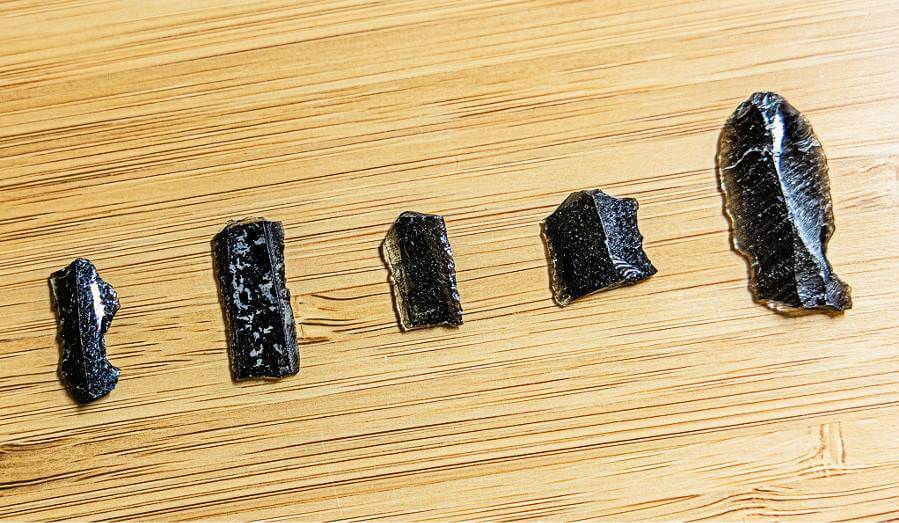An analysis of obsidian artifacts excavated during the 1960s at two prominent archaeological sites in southwestern Iran suggests that the networks Neolithic people formed in the region as they developed agriculture are larger and more complex than previously believed, according to a new study by Yale researchers.
The study, published Oct. 17 in the journal Proceedings of the National Academy of Sciences, is the first to apply state-of-the-art analytical tools to a collection of 2,100 obsidian artifacts housed at the Yale Peabody Museum. The artifacts were unearthed more than 50 years ago at Ali Kosh and Chagha Sefid, sites on Iran’s Deh Luran Plain that yielded important archaeological discoveries from the Neolithic Era — the period beginning about 12,000 years ago when people began farming, domesticating animals, and establishing permanent settlements.
Original analyses performed shortly after the artifacts were discovered had suggested people first acquired the obsidian — volcanic glass — from Nemrut Dağ, a now dormant volcano in Eastern Turkey, and then relied on an unknown second source for the material. This new elemental analysis showed the obsidian came from seven distinct sources, including Nemrut Dağ, in present-day Turkey and Armenia, which is as far as about 1,000 miles on foot from the excavation sites.
“It wasn’t a simple pattern of people obtaining obsidian from one source and then shifting to the next,” said Ellery Frahm, an archaeological scientist in the Department of Anthropology in Yale’s Faculty of Arts and Sciences, and the study’s lead author. “Rather, our analysis shows that they were acquiring obsidian from an increasingly diverse number of geological sources over time — a trend that was impossible to detect with the technology and methods available 50 years ago.”
The new analysis, combined with computer modeling, indicates that there were intensifying connections among Neolithic people, suggesting the presence of a greater number of settlements between the source volcanoes and the two sites where the artifacts were unearthed thousands of years later, Frahm said.
The artifacts were collected in the 1960s during multiple excavations of the two sites led by Frank Hole, the C.J. MacCurdy Professor Emeritus of Anthropology at Yale. The initial analyses were based largely on the artifacts’ appearance, specifically their color when held up to sunlight. A subset of 28 artifacts were then subjected to an elemental analysis method common at the time that involved grinding them into powder.
Frahm and coauthor Christina M. Carolus, a doctoral student in the Department of Anthropology, are the first researchers to study the elemental composition of the obsidian artifacts since these early analyses. They used state-of-the-art portable X-ray fluorescence instruments, which allowed them to examine the entire collection without damaging the artifacts.
“Every aspect of the discoveries made at these sites had been revisited since the 1960s except the elemental composition and sourcing of the obsidian artifacts,” Carolus said. “A lot more is known about the source volcanoes today than 50 years ago, and we know that sorting obsidian by color will miss a lot of nuances. Fortunately, we have instruments the size of cordless drills that, in a matter of seconds and without destroying material, give us a more accurate elemental signature than anything that was possible in the past.”
Scientists widely believed that humanity’s transition from the hunter-gatherer lifestyle to agriculture produced a period of rapid population growth due to the increased birth rates made possible by enhanced food supplies and permanent settlements. Finding evidence of this demographic shift often requires excavating locations that include burial sites, which can indicate a given settlement’s population and provide a clearer picture of how agriculture allowed people to disperse across a landscape, Frahm said.
The researchers’ analysis of the obsidian provided similar evidence.
“Tracing these obsidian artifacts from their sources to their endpoints offers insight into how they moved from hand to hand to hand over time, which helps us better understand population changes in the region during the Neolithic Era,” Frahm said. “It suggested there were larger social networks and more settlements between the source volcanoes and the excavation sites than we previously thought.”


